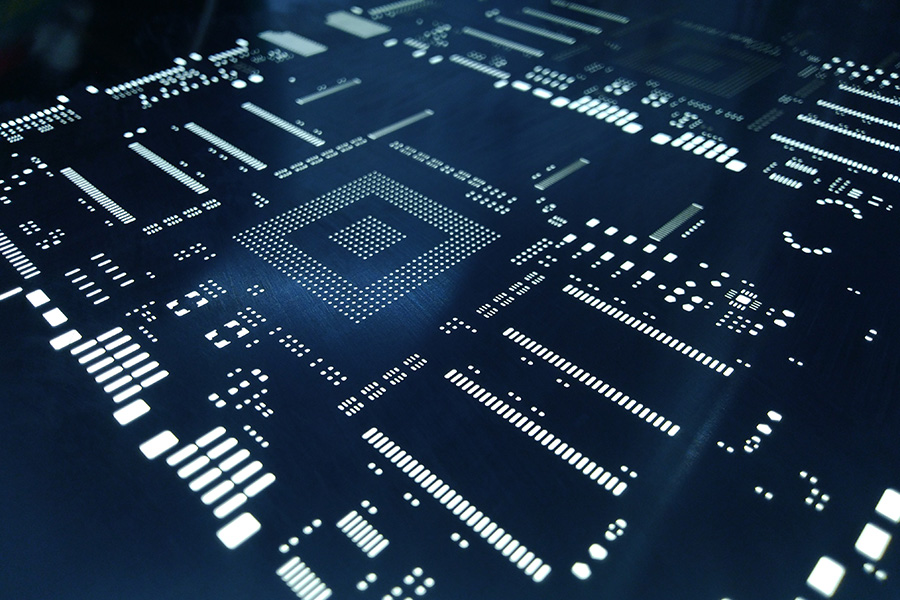Traditional solar cells primarily use silicon as its main material. However, with rapid advancements in technology, perovskite solar cells—a third-generation technology with lower costs and shorter production times—are now considered the most promising alternative to silicon-based solar cells. Professor Wen-Chin Lin of the Department of Physics at National Taiwan Normal University leads a research team that is actively exploring the potential of perovskite materials. They are attempting to combine ferromagnetic metals with perovskite, but achieving a stable bond between these two distinct materials presents a significant challenge. To overcome this, the team has successfully used two-dimensional materials to address surface tension issues, offering new insights into semiconductor material research.
Dr. Lin's research expertise lies in magnetism and surface physics. In recent years, he has focused on reversible hydrogenation of magnetic materials, the physical properties of novel two-dimensional materials, and the fabrication and analysis of spintronic devices. His award-winning paper is part of a series of interdisciplinary studies that combine ferromagnetic metals with two-dimensional materials.
In recent years, scientists have attempted to harness the spin properties of electrons in ferromagnetic metals while enabling perovskite materials to effectively control electron flow, maximizing the advantages of both substances. However, achieving uniform contact between these two fundamentally different materials while controlling the interface quality has been a significant challenge. The research team faced considerable difficulty in preventing negative interactions between the ferromagnetic layer and the perovskite layer, which could otherwise compromise the overall performance.
To effectively merge the two materials and achieve a synergistic "one plus one is greater than two" effect, the research process demonstrated the truth of the saying "the first step is always the hardest." Dr. Lin explained that the team initially believed that simply applying a perovskite solution onto the metal surface would allow them to observe the materials' properties. However, when using a spin-coating machine to combine the two substances, the perovskite solution struggled to overcome surface tension. It behaved like water droplets on glass, scattering in all directions under high-speed rotation and failing to spread evenly. Overcoming this technical challenge took considerable effort in the early stages of the research.
When the original materials failed to stack as expected, the research team expanded their approach by testing various magnetic metals. Despite repeated failures, they were unable to resolve the surface tension issue. The breakthrough came when they inserted an ultra-thin heterointerface, consisting of a 1-2 nanometer aluminum oxide layer or a monolayer of graphene, between the perovskite and metal films. By placing this oxide or two-dimensional material (graphene) between the metal and perovskite layers, the heterointerface acted as a "nano-adhesive," successfully bonding the two materials.
Using atomic force microscopy and scanning electron microscopy, the research team observed that the organic perovskite successfully formed a continuous, dense, and gap-free thin film, with surface roughness fluctuations within just a few nanometers. The perovskite solution was uniformly spread across the surface of the magnetic metal, confirming that the nanoscale oxide and graphene layers effectively improved the surface tension issues.
This research successfully addressed the interfacial challenges of perovskite-metal heterostructures, paving the way for new developments in the application of spintronic devices. Moreover, it represents a notable example of interdisciplinary collaboration. In addition to working with Professor Yu-Chiang Chao from NTNU's Department of Physics, the team also collaborated with Professor Ya-Ju Li from National Cheng Kung University. Both perovskite and magnetism experts contributed their expertise, further enhancing the study's impact.
Dr. Lin explained that this paper focuses on the fundamental properties of heterojunctions between two materials, characterizing it as "basic research." In the future, he aims to explore device-oriented applications of this research. He also noted that as more two-dimensional materials are developed, each new material brings unique properties. By combining and organizing these materials, many new discoveries can be made, and opportunities for interdisciplinary research will only continue to increase.
Additionally, the research team discovered that direct contact between perovskite and metal surfaces leads to challenges involving chemical reactions. The oxidation-reduction interactions between the two materials can degrade their properties, creating an "inactive layer" at the interface. However, the honeycomb structure of graphene prevents metal atoms from penetrating and interacting with the perovskite, effectively avoiding the formation of this magnetic "dead layer." Furthermore, the excellent electrical conductivity of graphene ensures that spintronic currents can still flow through the perovskite-metal heterostructure. The team is now focused on expanding this research towards multifunctional device applications as a new direction for future studies.
The research team spent approximately one year from setting the research topic to overcoming experimental challenges. Dr. Lin noted that the wave of interest in perovskite materials has made research in this field highly competitive. Once experimental data with unique findings are generated, it is crucial to publish the research quickly. Despite this, the semiconductor industry is still dominated by silicon. For perovskite to become a widely used material in the semiconductor industry, further exploration of various viable applications is needed. (This article was provided by The Center of Public Affairs.)
Source: Liu, S. Y., Lin, Z. E., Wu, B. T., Chen, T. H., Hung, H. C., Yin, C. H., Hsieh, C. T., Liu, C. M., Liaw, L. J., Hsu, S. Y., Chang, P. C., Chao, Y. C., & Lin, W. C. (2022). Improvement from discrete to uniform wetting of organic perovskite on ferromagnetic metals through a heterointerface. Applied Surface Science,601, Article 154180. https://doi.org/10.1016/j.apsusc.2022.154180


